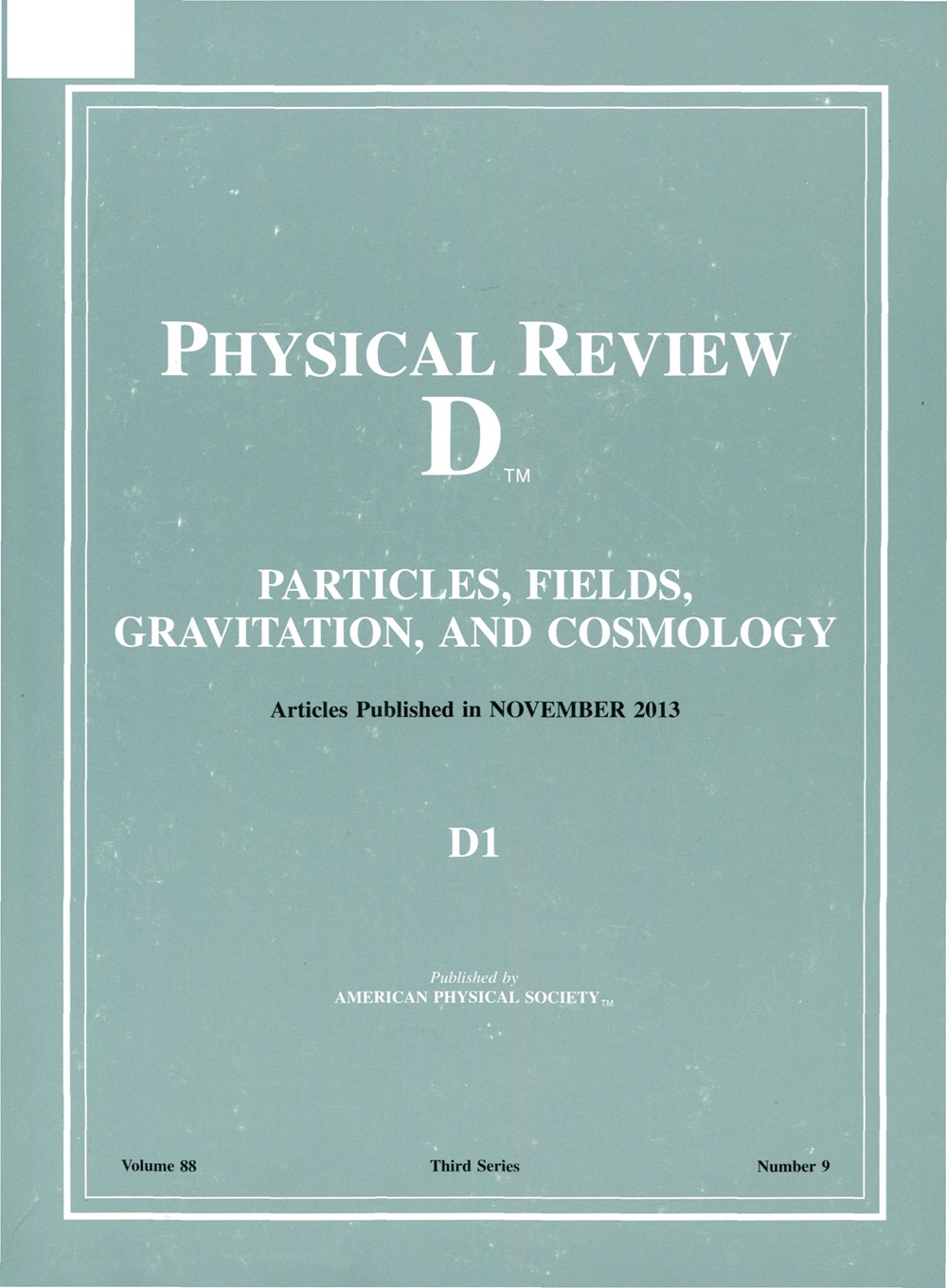Functional information geometry of Euclidean quantum fields
IF 5.3
2区 物理与天体物理
Q1 Physics and Astronomy
引用次数: 0
Abstract
Information geometry provides differential geometric concepts like a Riemannian metric, connections and covariant derivatives on spaces of probability distributions. We discuss here how these concepts extend in a functional sense to quantum field theories in the Euclidean domain which can also be seen as statistical field theories. The geometry has a dual affine structure corresponding to source fields or expectation value fields seen as coordinates. In the latter version the coordinates label the macrostates of the classical field theory. A key concept is a new generating functional, which is a functional generalization of the Kullback-Leibler divergence. From its functional derivatives one can obtain connected as well as one-particle irreducible correlation functions. It also encodes directly the geometric structure, i.e. the functional Fisher information metric and the two dual connections, and it determines asymptotic probabilities for field configurations through Sanov’s theorem. Based on the two dual connections one can construct covariant functional derivatives which allow one to calculate connected and one-particle irreducible correlation functions in general functional coordinate systems.欧几里得量子场的函数信息几何
信息几何提供了微分几何概念,如黎曼度规、连接和概率分布空间上的协变导数。我们在这里讨论这些概念如何在功能意义上扩展到欧几里得领域的量子场论,也可以看作是统计场论。该几何图形具有对偶仿射结构,对应于作为坐标的源域或期望值域。在后一个版本中,坐标标记了经典场论的宏观状态。一个关键的概念是一个新的生成泛函,它是Kullback-Leibler散度的泛函推广。从它的泛函导数可以得到连通的和单粒子不可约的相关函数。直接编码几何结构,即泛函Fisher信息度量和两个对偶连接,并通过Sanov定理确定场组态的渐近概率。基于这两个对偶连接,可以构造协变泛函导数,从而可以计算一般泛函坐标系中的连通和单粒子不可约的相关函数。2024年由美国物理学会出版
本文章由计算机程序翻译,如有差异,请以英文原文为准。
求助全文
约1分钟内获得全文
求助全文
来源期刊

Physical Review D
物理-天文与天体物理
CiteScore
9.20
自引率
36.00%
发文量
0
审稿时长
2 months
期刊介绍:
Physical Review D (PRD) is a leading journal in elementary particle physics, field theory, gravitation, and cosmology and is one of the top-cited journals in high-energy physics.
PRD covers experimental and theoretical results in all aspects of particle physics, field theory, gravitation and cosmology, including:
Particle physics experiments,
Electroweak interactions,
Strong interactions,
Lattice field theories, lattice QCD,
Beyond the standard model physics,
Phenomenological aspects of field theory, general methods,
Gravity, cosmology, cosmic rays,
Astrophysics and astroparticle physics,
General relativity,
Formal aspects of field theory, field theory in curved space,
String theory, quantum gravity, gauge/gravity duality.
 求助内容:
求助内容: 应助结果提醒方式:
应助结果提醒方式:


